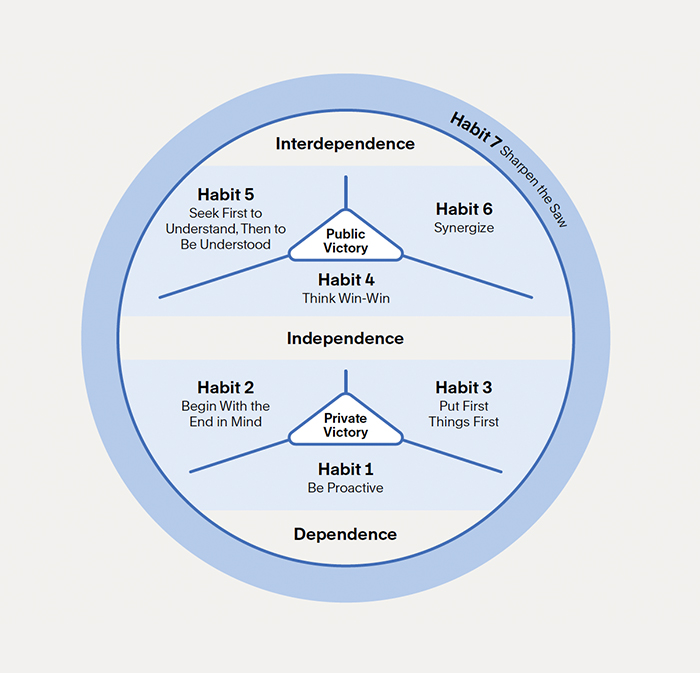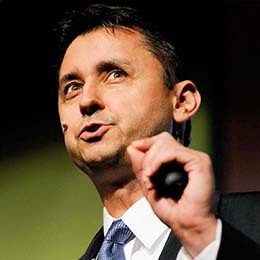Elevating Performance:
The Art of Building
High Performing Teams

The ability to build and sustain high-performing teams is a defining factor in an organization’s long-term success. While individual talent is undoubtedly valuable, the whole is often greater than the sum of its parts. In other words, the true power of an organization lies in the collective strength of its teams.
That’s not mere sentiment—there’s a strong business case for focusing on teamwork. Companies that cultivate strong, collaborative teams consistently outperform their competitors, driving innovation, engagement, and results. Studies have shown that high-performing teams are significantly more productive and creative than ineffective teams, making more-informed decisions and saving more time while producing better results. Companies that set the stage for collaborative teamwork also see higher employee engagement and job satisfaction, reducing turnover by 50%.
Struggling to re-energize disconnected team members? Download our free guide, The Art of Employee Engagement: A Practical Guide for Reckoning With “The Great Stay”, to share with your organization’s leaders.
But building a high-performing team requires more than simply bringing together skilled individuals. It demands a deliberate approach to leadership, communication, trust-building, and goal alignment. Effective teams operate with clarity, mutual accountability, and a shared commitment to excellence. Without these foundational elements, even the most talented groups can struggle to produce meaningful outcomes.
When organizations foster both individual effectiveness and collaborative relationships at work, leaders can create environments where teams can consistently deliver exceptional results while adapting to new challenges with resilience and agility.
Understanding High-Performing Teams
Building a high-performing team doesn’t happen automatically when you assemble a group of skilled individuals. You also need a culture of trust, collaboration, and accountability to ensure those individuals work cohesively together to achieve mutual goals. High-performing teams operate with a shared vision, clear communication, and a commitment to continuous improvement, allowing them to consistently achieve exceptional results. By understanding what sets high-performing teams apart, leaders can create environments where people work together effectively, adapt to challenges, and drive meaningful success.
High-performing teams exceed expectations, proactively identifying opportunities for growth and refining processes for efficiency and innovation. They thrive on trust, feedback, and collective problem-solving, allowing every member to contribute their best efforts. Success isn’t a one-time achievement but an ongoing process—these teams embrace adaptability, resilience, and a growth mindset of continuous improvement to stay agile in evolving environments. Their ability to consistently deliver results makes them vital to an organization’s long-term growth and competitive edge.
Key Characteristics of High-Performing Teams
High-performing teams stand out for more than their technical skills. They also possess the ability to collaborate, adapt, and stay aligned with a shared purpose. They foster trust, accountability, and open communication, ensuring that every member stays engaged and contributes meaningfully to collective success. These teams see change as an opportunity, strive toward continuous improvement, and solve problems creatively, making them resilient in dynamic environments. With clear goals, well-defined processes, and a commitment to excellence, they consistently deliver superior results while fostering a culture of innovation and growth.
Several key traits define high-performing teams:
- Effective Communication: Open and honest dialogue ensures that all team members are aligned and informed, fostering a culture where ideas can be freely exchanged and issues promptly addressed. This transparency not only prevents misunderstandings but also builds trust among team members, facilitating smoother collaboration and decision-making. Regular check-ins and feedback sessions are integral to maintaining this level of communication.
- Mutual Respect: Recognizing and appreciating each member’s contributions cultivates an environment where individuals feel connected and valued, leading to increased engagement and commitment. Team members who “seek first to understand” by practicing active listening will not only improve communication but will also demonstrate deep respect and understanding—as is exemplified in the fifth of the 7 Habits of Highly Effective People®. When team members respect each other’s skills and perspectives, this enhances collaboration and reduces conflicts for a more harmonious and productive work environment.
- Shared Vision: Our research shows that only 15% of employees know their organization’s most important goals. A unified understanding of the team’s goals and objectives ensures that all efforts are directed towards common outcomes, enhancing cohesion and purpose. This alignment allows team members to prioritize tasks effectively and work synergistically towards achieving strategic objectives. Strategic leaders play a crucial role in articulating and reinforcing this vision, ensuring that it resonates with all team members.
- Results-Oriented Focus: A commitment to achieving tangible outcomes drives teams to set clear targets and diligently pursue them, ensuring that performance is consistently optimized. High-performing teams will often use a strategic framework—like the 4 Disciplines of Execution®—that enables them to track progress and maintain momentum for a “winnable game.” This focus on results fosters a sense of accountability and motivates team members to perform at their best. Leaders can help connect each individual’s sense of purpose to the overarching Wildly Important Goal® to further engagement and performance-based outcomes.
- Adaptability and Open-Mindedness: At a time when over 90% of organizations say they’ve recently experienced disruptions unrelated to the COVID-19 pandemic—and when nearly the same percentage of business leaders say that resilience is now one of their most important strategic priorities—it’s never been more important for teams to be adaptable to change. Collaborative teams are flexible and open to new ideas. They’re able to react and acclimate to changing circumstances, often pushing the envelope to innovate in new ways to stay ahead of the curve. Leaders who deftly guide teams through change, model adaptable behaviors, and remove any fear around risk-taking can foster resilience and open-mindedness in their direct reports.
The Building Blocks of High-Performing Teams

Individuals, families, teams, and organizations shape their own future by creating a mental vision and purpose for any project, large or small. They don’t just live day to day with no clear purpose in mind. They identify and commit themselves to the principles, relationships, and purposes that matter most to them.
Of course, leaders need to assemble teams with complementary skills and personalities to support broader objectives. The right mix of talents and perspectives can allow teams to approach challenges from a variety of angles to foster innovation, creativity, and comprehensive problem-solving.
But combining team members with a variety of skills and backgrounds doesn’t guarantee success. High-performing teams are intentionally built on individual effectiveness, collaborative relationships, strong leadership, trust, and clear goals. Leaders shape team dynamics by ensuring connection, alignment, and open communication. With these foundations in place, teams stay agile, sustain performance, and drive meaningful results.
Individual + Collaborative Skills: Public and Private Victories

Personal and interpersonal effectiveness unlocks your technical and functional capabilities to create, collaborate, and achieve results with others.
While “hard” skills aren’t the only component organizations need for high performance, the most high-achieving teams are comprised of individuals who have invested in their personal development and are committed to building collaborative relationships with others.
This combination of individual effectiveness and relationship-based skills—sometimes grouped into the Private Victory® and the Public Victory® on the Maturity Continuum®—allows team members to assume personal responsibility and prioritize clear success measures while prioritizing respectful, cooperative interactions where everyone benefits. By providing team members with opportunities for development and embodying the habits of interdependence, leaders can heighten team performance while ensuring their direct reports can navigate interpersonal challenges at and outside of work.
Download our free guides to learn more about developing Private Victories and Public Victories in your teams.
The Maturity Continuum®
Each habit is based on universal principles and paradigms of effectiveness, with practices that move learners from dependence and independence to interdependence.
Private Victory® | Habits 1–3
Emphasizes personal mastery, defining desired outcomes and focusing efforts to lay the internal groundwork for success.
Public Victory® | Habits 4–6
Fosters collaboration and synergy with others, building strong relationships that allow us to accomplish more together than we could alone.
Renewal | Habit 7
Emphasizes the need for self-renewal and continuous improvement to succeed in and sustain the other habits.

High-Trust Leadership

The first job of a leader at work or at home is to inspire trust. It’s to bring out the best in people by entrusting them with meaningful stewardships, and to create an environment in which high-trust interaction inspires creativity and possibility.
Trust is the bedrock of healthy relationships, so it’s no surprise that high trust is crucial for high-performing teams. And undoubtedly, leadership plays a pivotal role in fostering trust within a team. When a leader can align their team with the organization’s vision and cultivate an environment of trust, they’ll set the stage for high performance. That’s because high trust allows people to feel confident in their leaders and in their own abilities—empowering them to be more innovative, creative, and communicative. This leads to higher productivity, engagement, and performance—what we refer to as “trust dividends,” as they lower the cost of doing business.
Leaders can build trust in their teams by demonstrating their character and competence. By modeling the 13 Behaviors® of High Trust—a list that includes creating transparency, taking accountability, righting wrongs, keeping commitments, showing loyalty, listening first, and making continuous improvements—leaders will show their direct reports that they have the integrity, intent, capabilities, and results needed to inspire confidence, motivation, and collective action.
Download our free guide to learn How to Build Trust and Unleash the Potential of Your Direct Reports.
Clarity of Purpose, Goals, and Feedback

The cause of almost all relationship difficulties is rooted in conflicting or ambiguous expectations around roles and goals.
A shared purpose, measurable goals, and clear feedback are all crucial for driving team performance. Many teams rely on an execution framework to define those goals, identify the most impactful activities, track progress, and report on successes and shortcomings to activate frontline teams. A framework like this not only helps keep team members accountable for their results, but it also directly connects their efforts to the overall impact on important goals—which fulfills both individual and shared purpose.
Of course, leaders can also do their part to ensure team members have ample opportunities for personal growth and development, whether it’s through mentorship, courses for upskilling, or a formal L&D program like FranklinCovey’s Impact Platform or All Access Pass®. Additional support, like weekly 1-on-1 meetings and team meetings, can build trust and engagement by having open conversations around current progress and the potential for growth. Ensuring leaders are using a healthy balance of courage and consideration to create a culture of feedback will provide team members with the chance to have their voices heard, improve clarity around expectations, and build the resilience required to accept feedback with grace.
Make sure it’s not all about constructive criticism! As a leader, you’ll also want to prioritize recognition of your team members’ contributions on a regular basis to enhance engagement, motivation, and acknowledgment of value. Even the most skilled individuals and high-performing teams need positive acknowledgment to fuel their fire.
Download our free guide to learn how to Listen Like a Leader and drive more powerful conversations with your team.
Strategies for Cultivating High-Performing Teams
By creating an environment where team members feel heard, empowered, and equipped to adapt, leaders can cultivate a culture that drives exceptional results. Here are three key areas on which leaders should focus to develop winning teams.
Foster Effective Communication

Leaders with a transparency mindset share their concerns openly, freely acknowledge that they don’t have all the answers, and actively engage feedback from others no matter where they reside on the organizational chart. Speaking with this level of transparency not only shows respect. It endears respect.
Effective communication is the foundation of any successful team. It ensures that everyone is aligned, expectations are clear, and collaboration flows seamlessly. When communication breaks down, misunderstandings arise, productivity suffers, and trust erodes. To prevent these challenges, teams should adopt intentional communication practices, such as:
- Regular Check-Ins: Holding consistent meetings—whether daily stand-ups or weekly syncs—allows teams to discuss progress, address concerns, and realign on goals. These check-ins create opportunities for problem-solving and ensure that all team members stay on the same page.
- Active Listening: Encouraging team members to listen attentively to each other fosters respect and connection, ensuring that every voice is heard and valued. This practice builds trust and strengthens team cohesion. As a leader, be sure to model the behaviors of empathetic listening in your interactions with your team, too.
- Transparent Information Sharing: Openly sharing relevant updates, decisions, and challenges prevents miscommunication and reinforces a culture of trust and accountability. Knowledge sharing can also ensure success in a given area doesn’t hinge on a single person. Leaders should demonstrate transparency when possible to encourage the same behavior throughout the team.
When teams communicate effectively, they build strong relationships, minimize friction, and create an environment where collaboration thrives.
Encourage Innovation and Risk-Taking

Effective people are not problem-minded; they’re opportunity minded. They feed opportunities and starve problems.
High-performing teams don’t just execute tasks efficiently—they push boundaries, experiment with new ideas, and challenge the status quo. However, innovation can only flourish in an environment where team members feel empowered to take risks and explore creative solutions. Strategies for fostering this culture include:
- Embracing Failure as a Learning Opportunity: Teams that view failure as part of the learning process are more willing to take bold steps. Leaders who encourage reflection on setbacks rather than penalizing mistakes will build team members’ confidence in experimentation.
- Rewarding Creative Thinking: Recognizing and celebrating innovative ideas, even when they don’t immediately succeed, reinforces a culture where team members feel valued for their contributions. Publicly acknowledging efforts can inspire others to think outside the box.
- Providing Autonomy: When leaders trust their teams to explore new approaches and make decisions, they empower employees to innovate. Giving team members the freedom to solve problems in their own way fosters a sense of ownership and responsibility.
When innovation becomes part of the team’s DNA, organizations gain a competitive advantage by staying ahead of challenges and driving meaningful change.
The Most Trusted Leadership Company
Learn how your organization can use our people, content, and technology to create collective action and meaningful change.

Build Resilience and Adaptability

A plan gives both leaders and teams a path forward in times of change.
The most successful teams don’t just react to change—they anticipate and navigate it with confidence. Being resilient and adaptable are crucial for maintaining high performance consistently, particularly in a rapidly changing world. Leaders can help their teams build resilience by:
- Developing Change Management Skills: Providing team members with tools to effectively manage transitions can reduce stress and uncertainty. Leaders who recognize the predictable pattern of change and help guide others through it can help individuals and teams stay agile in shifting environments.
- Promoting a Growth Mindset: Encouraging the belief that skills and abilities can be developed through dedication and effort helps team members approach challenges with optimism. Teams with a growth mindset see obstacles as opportunities rather than threats.
- Supporting Holistic Well-Being: Resilient teams prioritize mental and emotional well-being. Creating a culture where employees feel supported and modeling consistent self-renewal habits will ensure long-term sustainability for high-performing teams.
Investing in resilience enables teams to adapt and thrive in any environment, ensuring sustained success. Learn how to cultivate personal effectiveness and resilience during change.
Sustaining High Performance: The Path to Lasting Team Success
High-performing teams are the cornerstone of organizational success. By focusing on effective communication, mutual respect, shared vision, and a results-oriented approach, teams can achieve exceptional outcomes. Leaders play a crucial role in fostering trust, providing clarity of purpose, and supporting continuous learning and development. By implementing these strategies, organizations can build and sustain high-performing teams that drive long-term, meaningful impact.
Register for our complimentary webcast, Drive Performance: Align People and Business Strategies for Breakthrough Results, to close performance gaps and unleash high performance in your teams.








